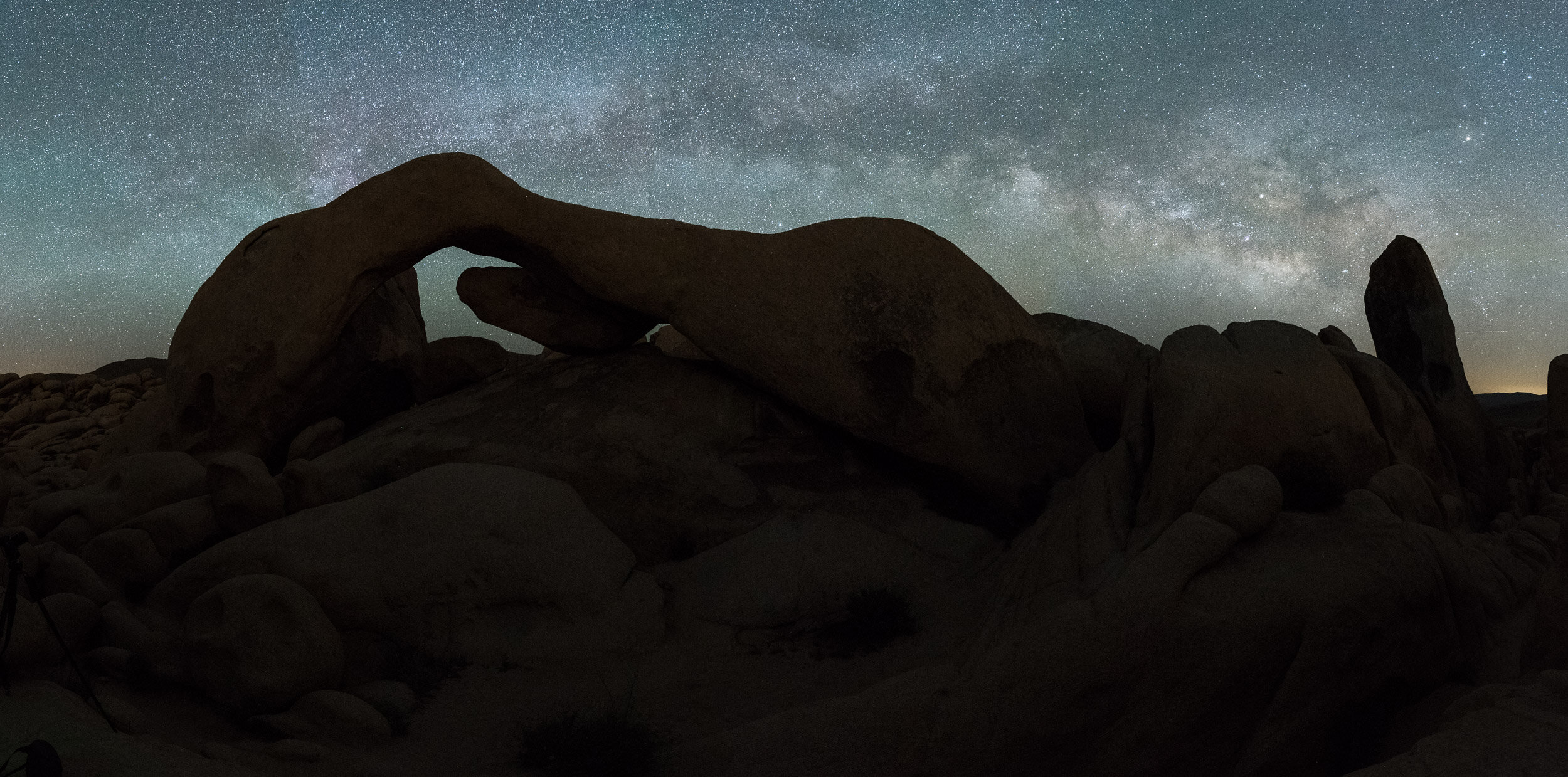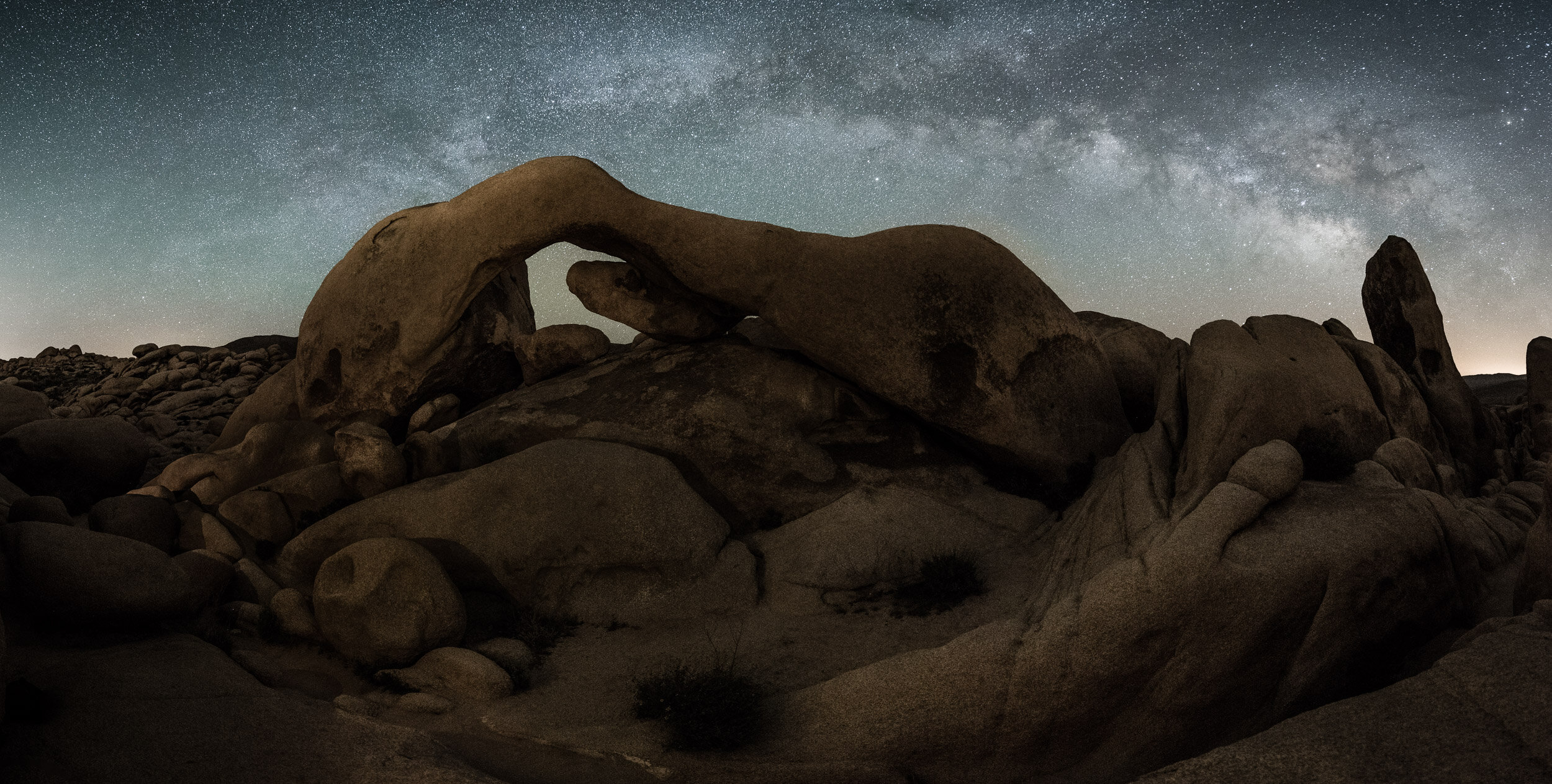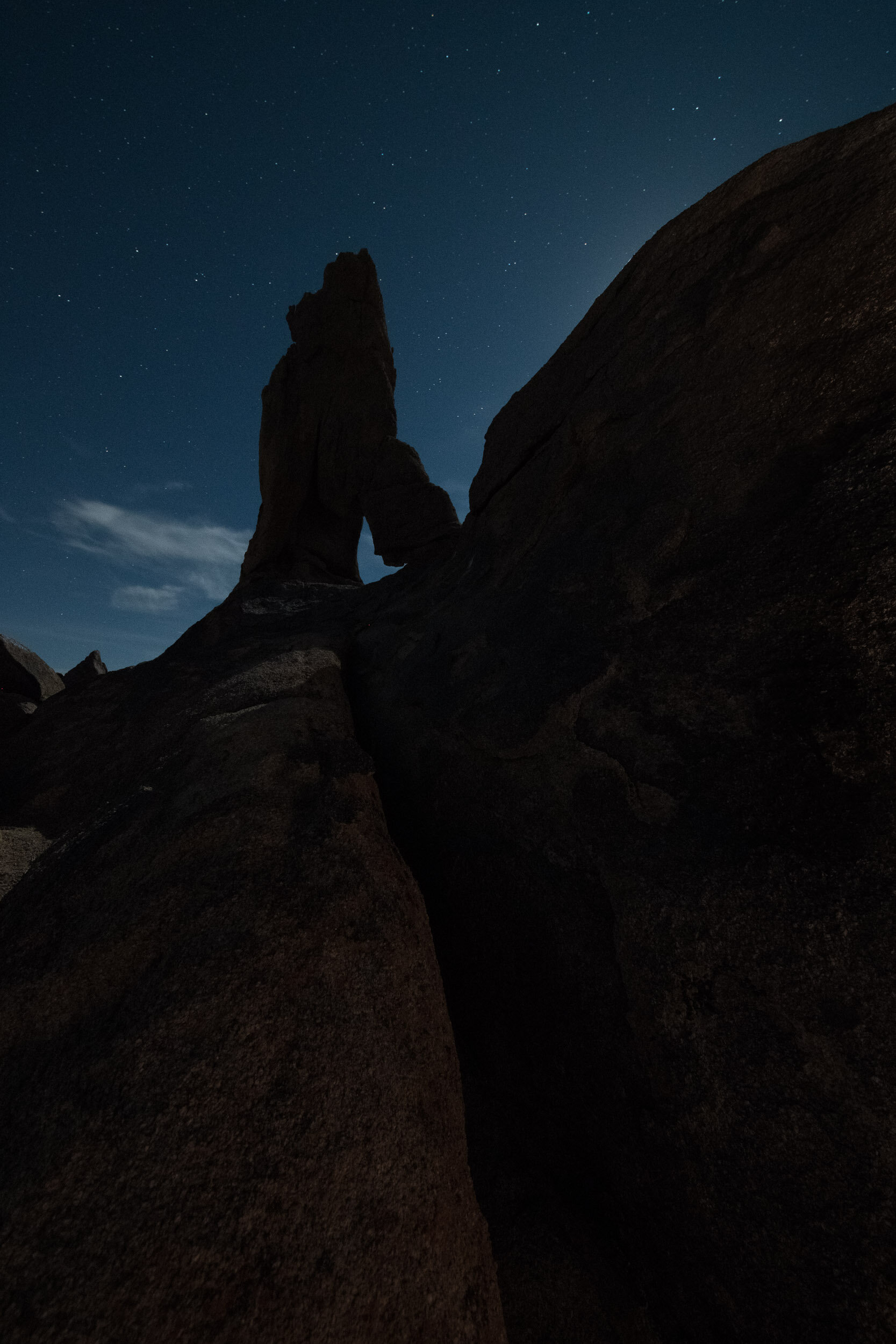Over 600 full moons have pulled at me during my lifetime. The moon has not only guided me, but has provided balance to our planet and instructed timekeepers since, well, the dawn of time. It is the second brightest celestial object after the sun, and is Earth’s own private and natural satellite.
Most night photographers object to the brightness of the moon—a veritable star eater that streaks across the sky and blows out the details of the Milky Way. Many night photographers prefer to stay inside than to be out under soft moonlight.
But just as the moon brought wonder and awe to our ancient ancestors, it can bring just as much wonder to our photographs—not to mention the superwonder that even modern humans have been gifted from supermoons, blood moons and eclipses.
Along those same lines, today we experience a blue moon—on Halloween, no less!
Of course, any full moon that falls on Halloween would be a blue moon, but that doesn’t mean it’s common. The last time the two events coincided was 1944, and the next will be 2039.
To honor this event, all five National Parks at Night instructors got together to share images of when they lassoed the moon. We hope this inspires you to get out tonight (after trick-or-treating, of course) to bring back some inspired images!
Matt Hill
The Headless Horseman, Sleep Hollow Cemetery. Nikon Z 6 with a Venus Optics Laowa 15mm f/2 FE Zero-D lens. 4 seconds f/5.6, ISO 800.
Jim Logan invited me to photograph the Headless Horseman in Sleepy Hollow Cemetery in early October. This wasn’t the first time—it’s nearly an annual tradition that I enjoy very much. Each time I challenge myself to light it differently, and this year we were extra lucky to have clear skies (very unusual!) plus the conjunction of Mars and the moon (what luck!).
After consulting PhotoPills, we set up where the moon would rise. I brought along five Nanlite PavoTubes and lit a scene that covered a large area, as the horse sometimes wanders.
I used my wireless Phottix Aion remote intervalometer to trigger my camera, and walked around with a CTO-gelled speedlite to highlight the horse and rider. The final touch was inserting a Nanlite Pavotube 6C 10" tube light into the pumpkin to illuminate it from within.
Fortune smiled upon us! The moon rose, the planets and satellite aligned, and this magic moment unfolded in front of my camera.
Lance Keimig
Mesquite Sand Dunes, Death Valley National Park. Nikon D750 with a Nikon 14-24mm f/2.8 lens. 30 seconds, f/8, ISO 400.
Experiencing sunset followed by the slow fade into darkness along with the full moonrise in the sand dunes of Death Valley is unforgettable. Death Valley is one of my favorite parks, and I think moonrise in the sand dunes is one of the very best parts of any visit to the park.
After walking about a mile from the road to get into the dunes and then cresting over the first ridge, it feels as if the dunes go on forever and that I am alone in the universe. That sensation can be at times both calming and exhilarating. The landscape is vast, but also intimate. It can be challenging to photograph––especially if one is trying to accurately record the essence of the experience.
On this particular night, I allowed myself to get lost in the experience, and hadn’t set up a shot for when the moon rose over the horizon. As a result, I wasn’t ready when it happened. The best light lasts only a few minutes, and it was rapidly slipping away from me.
Full Stop. Breathe. Be present in the moment. Any pressure I feel is self-imposed. I stopped dead in my tracks, realizing that I had been hurrying to find “The Shot” when the reality was there was no one image to be made. The images were all around me and I had to choose.
Backlighting by the moon with soft light scraping across the surface of the dunes was the common element to every image I saw. I composed, planning in the field to later crop to panoramic proportions. I decided to let the moon blow out, and exposed to keep some detail in the darkest areas in the sand. In the end, it was a straightforward shot, but captured the sensation of being there, alone, in the moonlight.
Tim Cooper
Moon over Trona Pinnacles National Natural Landmark. Nikon Z 6 with a Nikon 14-24mm f/2.8 lens, light painted with a Luxli Viola. 20 seconds, f/5.6, ISO 1600.
For many night enthusiasts, if the night doesn’t have a Milky Way, it isn’t a night to photograph. I love night photography. Any night. Any time of the month. I enjoy the challenge of making images under various conditions. And one of my favorite challenges is shooting under the full moon.
Moonlit landscapes provide limitless possibilities. I can use the moonlight as the key (main) light, which renders the scene as a near duplicate of a daytime image, or I can use it to simply fill in the shadows of my favorite light painting scheme. I can draw out texture or emphasize shape in the foreground, or I can shoot directly into the moon and use it as backlight.
One of my favorite techniques mimics the popular sunburst technique used in daylight photography. On a clear moonlit night, I simply point my camera directly into the moon and stop down to f/5.6 or f/8. The smaller aperture renders the moon as a moonburst. Shutter speeds under these conditions can still be short enough to render star points, and a decent exposure can be made at lower ISOs, keeping high exposure noise to a minimum.
Chris Nicholson
Lathe Arch and Mount Whitney, Alabama Hills National Scenic Area. Nikon D5 with an Irix 11mm f/4 lens. 30 seconds, f/11, ISO 3200.
I love shooting the moon, so it’s hard to pick just one moon image. So rather than spending an inappropriate amount of time searching through my images (OK, I admit—after spending an inappropriate amount of time searching through my images), I decided to show a photograph I made just this past week.
This actually started as a challenge from Lance. I was in Alabama Hills National Scenic Area in California with Tim and our workshop group, and Lance told me to see if I could get a photo of Lathe Arch with Mount Whitney in the background. He was setting me up, for sure. The arch is small—about two feet high—and photographing it from said angle requires wedging yourself into a steep crevice in the rock.
I guess I kind of cheated. I used an Irix 11mm f/4—a superwide but rectilinear lens that allowed me to set up superclose to the arch, so that I could use horizontal rather than flat rock to balance my tripod. Still, it wasn’t easy—the tripod legs were flat to the ground, two of them spreading precariously close to creeping into the frame, and the third extending precariously over the edge of the crevice.
Of course, there was light painting too, and that required some calisthenics to jump up and down and over rocks so that I could work in foreground light, as well as background light from two angles, in a short enough exposure to keep the moon from trailing into an oval. This is why I wear good trail shoes when shooting.
And hey, I got the shot! With the moon. Thanks to a challenge from a friend.
Gabe Biderman
Supermoon and bridges in New York City. Nikon D750 with a Tamron 150-600mm f/5-6.3 lens. 1/2 second, f/11, ISO 400.
I began my official supermoon chase in earnest in 2016. Everything aligned perfectly on November 14, which would feature the biggest supermoon since 1948. The moon would rise at 5:14 p.m., but as much as I love New York City, there isn’t much of a horizon line here. I used PhotoPills to find the best spot, which I determined to be on the southern shores of the East River, at Pier 17, where views of the Brooklyn, Manhattan and Williamsburg bridges align.
As the day of the moon event drew near, I chose to share the experience as a National Parks at Night photo walk with B&H Photo. Our friends from Tamron brought a couple of 150-600mm lenses in Nikon and Canon mounts, which we set up on Wimberley Gimbal heads so people could easily track the moon.
The biggest challenge was the cloudy sky. The moon rose, but we couldn’t make out anything against the cityscape. Then one hour later the moon found an opening in the clouds and peeked out for exactly two minutes.
I was able to make eight exposures during that time, ranging from 1/4 second to 6 seconds. The 1/2-second exposure ended up being my favorite, as it revealed detail in the moon as well as the surrounding clouds. The moon is as big as the arch of the Williamsburg Bridge, and I love the abstract layers of the beams of the Brooklyn and Manhattan bridges.
It was a thrilling two minutes. I loved pre-visualizing and then waiting for that moment. I imagine this might be close to what wildlife photographers feel when they are hidden quietly in the brush and waiting for perfection to happen. I got my supermoon.
Wrapping Up
Have you shot the moon? We’d love to see your images. Feel free to share in the comments, on our Facebook page or by tagging @nationalparksatnight on Instagram!













